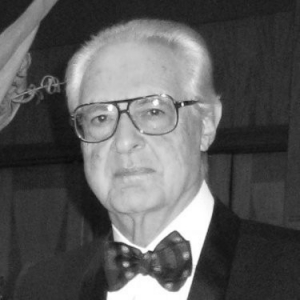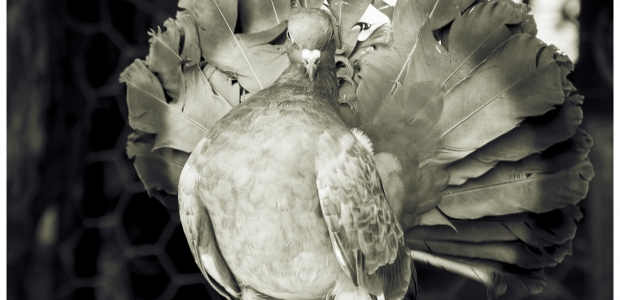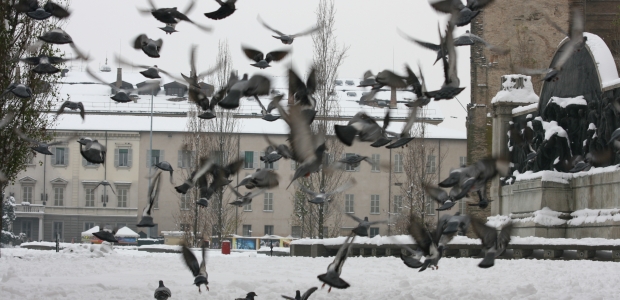Languages
The air meat
In a distant past in Parma there were many animals, many of which were also eaten, according to different rules, and which today are not only prohibited by the laws, but above all from a different social feeling.
Sometimes, just talking about it, cause emotional reactions in those who do not know the customs and traditions of a past unknown to the majority.
Meat of urban animals that now are forbidden, once might or might not be eaten, according to different conditions and therefore they were also defined as meat ambiguous.
Without enter in more detail, the most significant of these meats were present in all public spaces, in the air, on the roofs, on the roads and underground.
Let's start from the top, starting to talk about the so-called “meat air”.
The urban sky of Parma, much more than today, once it was inhabited by many birds that nested under the roofs or in the dovecotes of luck, or specially made. Most of these birds not fed into the city, but moved to the nearby countryside or in fallow land/wasteland, where there was food all year. Except in cases of abundant and persistent snowfalls, in every season every ground, which does not yet know the arrival of the chemicals, was full of insects, plants and seeds to eat. Even in the town there were insects, and even bothered its citizens, were the food for birds, beginning with the swallows and swifts. Urban air meats were the doves, swallows and sparrows.
Doves
Eating doves is an ancient habit of Parmesans, which is connected to the use of these animals as messengers in peacetime, but especially in wartime.
In the emerging Parma, military town, there are pigeons messengers. It is very likely, if not certain. Historical data remember that the pigeon is the quickest way for military communications for the Persians, the Assyrians, the Egyptians, the Phoenicians, the Greeks and the Romans. Giulio Cesare uses them to conquer Gaul. For this it is believed that pigeons messengers are present in Parma founded by the Romans as a military base, in the same way in which they are present in nearby Modena, founded almost simultaneously.
Indeed it’s ascertained that in 43 BC, during the wars that followed the assassination of Giulio Cesare, Modena is held by Decimus Brutus, one of the conspirators of the Ides of March and that ruled Gaul with the commission of the Senate.
The city is besieged by Marco Antonio[i], against which came to Decimus Brutus’s rescue the consuls Aulus Hirzio and Vibio Pansa, and it’s known that the contacts between the besieged Decimus Brutus and Aulus Hirzio, surpassing the encirclement of Marco Ottaviano, are maintained by doves messengers which were part of the equipment of the troops of Modena [ii].
The carrier pigeon lives with the man in an urban environment and initiates a relationship that, with ups and downs, comes to the present. The doves (Columba livia) does not nest on trees, but in the recesses of the rocks and quickly get used to living in random cavities of house, and then in dovecotes man-made [iii].
When returns free, becomes the rock pigeon, also considered a "stray". Endowed with an exceptional sense of locality [iv] and with ability to return to its nest from a distance, the pigeon is used for the transport of messages, but also for to be raised in the urban contest.
The livestock of the urban pigeon begins speed races of different distances (the carrier pigeons in a day return from seven hundred, eight hundred and a thousand kilometers away with an average speed of over seventy kilometers an hour with tips that are close to one hundred) and "games" led with flags between groups or flocks of different dovecotes. Obviously not missing a food use, both of pigeons and of their eggs[v].
The presence of carrier pigeons in Parma in Roman times is not without result and after more than two thousand years it started the breeding sport. In Italy this sport is reborn in 1877 in Emilia Romagna, thanks to the recovery of many pigeons, lost in the area while were participating in a race from Rome to Brussels.
By the cross of these pigeons born the first Italian breed of carrier pigeons: the Dove of Parma. In 1878, in Florence, it is founded the first Club of pigeons breeders and immediately the same happens in other towns in Modena, Reggio Emilia, Parma and Bologna.
In Parma pigeons or rock pigeon, those domesticated and kept in dovecotes form part of the fauna of the air. A custom, that of the dovecotes, which in imperial Rome forced Augustus to imposed a tax on faces, or guano, that especially at night was exported to fertilize the fields from the city-dovecotes.
The justification for this tax it was that the urban pigeons found nourishment in urban wildland peripheral, which are under Imperial control. This tax was copied by Imperator Vespasian who imposed a tribute on urine collected in the thermal baths and coming out from the city. Hence the origin of to call “vespasiani” the public urinals.
The presence of domestic pigeons in Parma also influences the parmesan cuisine, as evidenced by the presence of typical dishes, such as Bomb of rise with Pigeon
Nobody today would think to eating urban pigeons or rock pigeon, now it’s prefer eat those coming from breeding farm, although this happens less and less often.
Swallows and sparrows
Completely missing is the habit of eating other birds that were once were plentiful in the city like the swallows, of which the Farnese were greedy. The poor people eat sparrows, captured with different tricks such as traps and nets, especially by children. A miserable prey, which more than feed needed to flavor the polenta or bread soup, giving the impression of a plate of succulent game, as a lord.
The turtle-doves were mainly wild birds, while those with the collar are recently arrived in Parma, in the first half of the twentieth century.
note
[i] The same Marco Antonio conquered and devastated Parma.
[ii] The war history of carrier pigeons is long and complex, almost to our times. The carrier pigeons have taken part in all wars as bearers of dispatches; able to find their dovecote mounted on military tanks, although this moved to fifty-tres. Even the Italian Army, until after the Second World War, was equipped with dovecotes military. During the Normandy invasion, the journalists following the allied troops could send the first articles from the French coast thanks to the pigeons, who arrived in London in a few hours.
[iii] In the past this pigeon was also named "casalino".
[iv] A sense of direction that guides the pigeon in his return to the nest, according to the most recent scientific requests, is based on three systems which are coordinated and electromagnetic, visual and olfactory.
[v] Alongside the breeds of pigeons messengers, there are also breeds of pigeon meat, and fat and poor fliers, so called "sottobanca", as reared under a bench, even if it lacks the hypothesis that they were animals sold illegally and outside the normal circuit of poultry shops.
Photo credits
<a href="http://www.flickr.com/photos/50244740@N07/7487052670">315/365 - Strike a pose</a> via <a href="http://photopin.com">photopin</a> <a href="https://creativecommons.org/licenses/by/2.0/">(license)</a>
<a href="http://www.flickr.com/photos/7170162@N02/4348631163"></a> via <a href="http://photopin.com">photopin</a> <a href="https://creativecommons.org/licenses/by/2.0/">(license)</a>
<a href="http://www.flickr.com/photos/7170162@N02/4348631445"></a> via <a href="http://photopin.com">photopin</a> <a href="https://creativecommons.org/licenses/by/2.0/">(license)</a>
Published in
Animals belong to a city, in the way they are seen, accepted or refused in the ever-changing lives of individuals, families and neighborhoods. If one can read them, it is possible to find traces of how animals are perceived by looking at architecture, painintgs, lifestyle, eating habits and local memories.
Animals become part of the soul and identity of a city, through a subtle and complex mix of relationships and feelings; and their relationship with the city changes over time.
And many other indications show why animals, or the way humans see them, are important for defining a city, now and in future.
About the author

Giovanni Ballarini
E' Professore Emerito dell’Università degli Studi di Parma, Dottore honoris causa presso l’Università di Atene e membro dell’Ordre du Mèrite Agricole della Repubblica Francese. E’ stato esperto in diverse commissioni del Ministero della Sanità e membro dello SCAN.
Nel corso della sua carriera ha svolto un’intensa attività di ricerca scientifica in vari campi della clinica veterinaria. Negli ultimi 30 anni ha sviluppato interessanti studi sugli aspetti antropologici dell’alimentazione umana, pubblicando numerosissimi libri, monografie ed articoli, questi ultimi spesso con lo pseudonimo di John B. Dancer.
E’ Direttore e giornalista della rivista “Civiltà della tavola” dell’Accademia Italiana della Cucina, di cui è Presidente dal 2008, infine è Vicepresidente de l’Académie Internationale de la Gastronomie.

